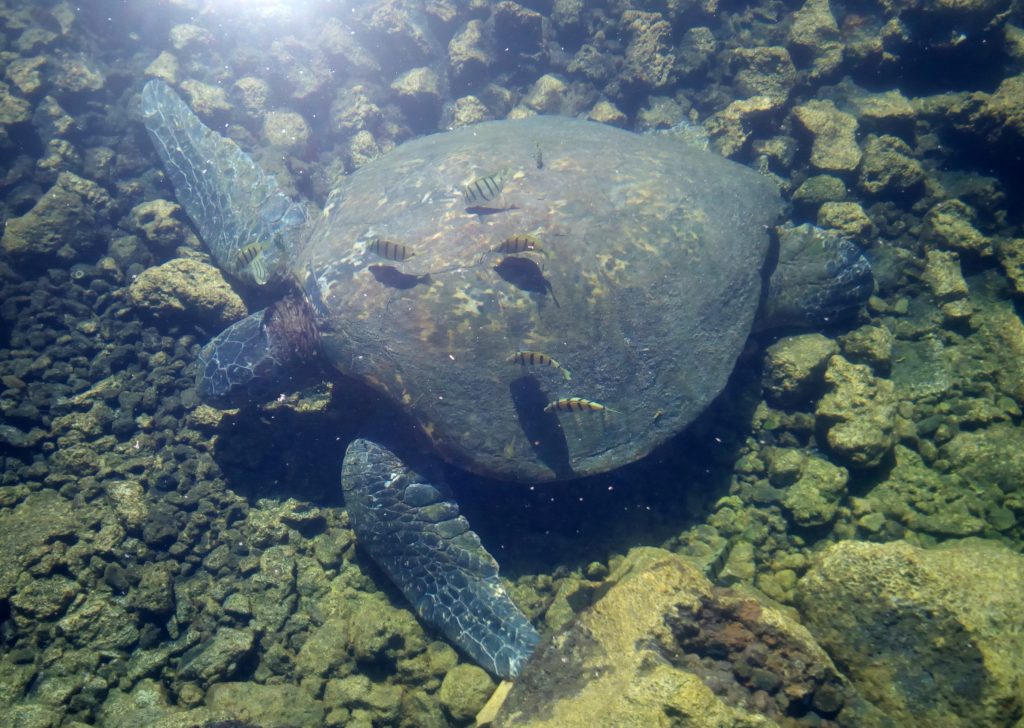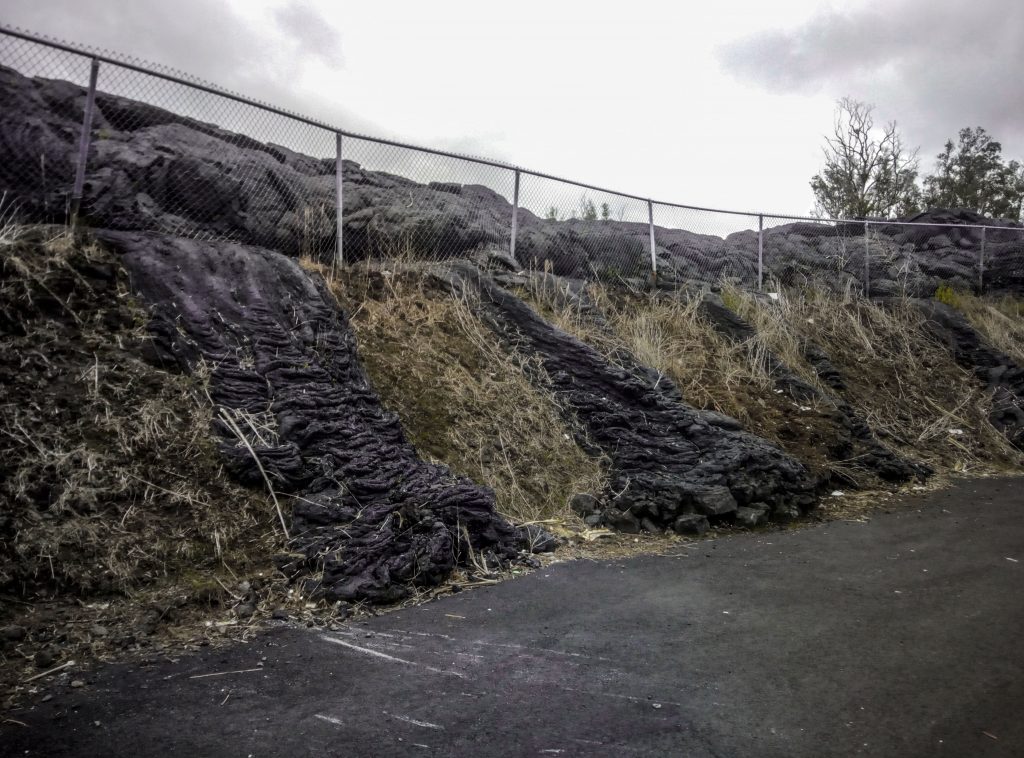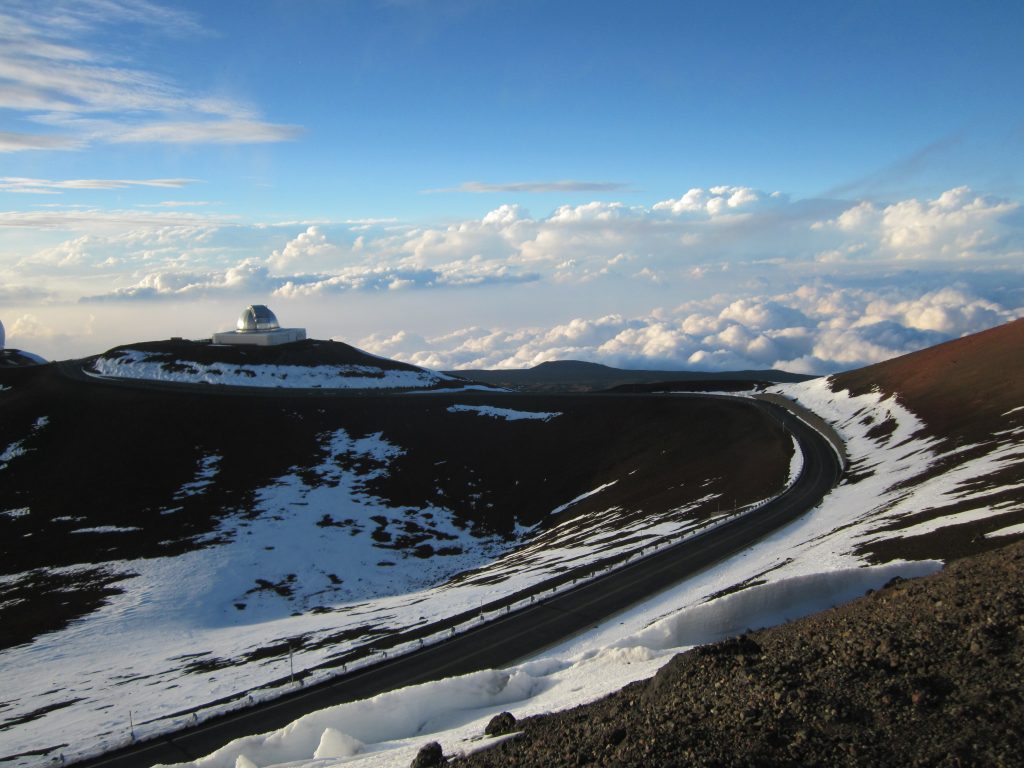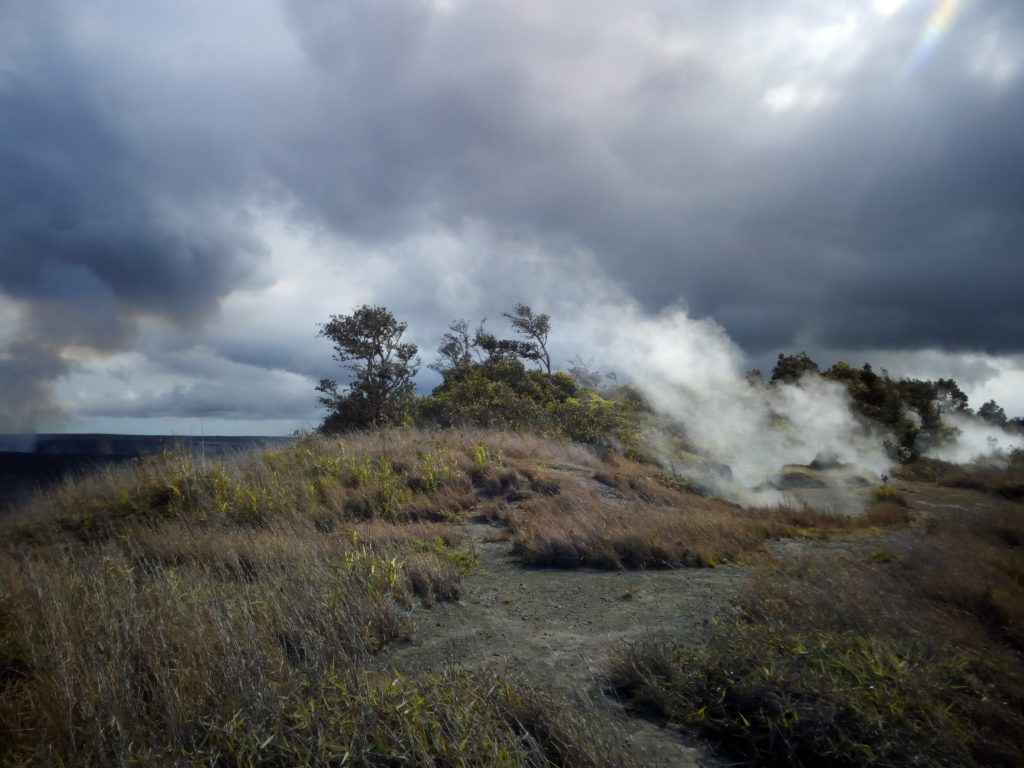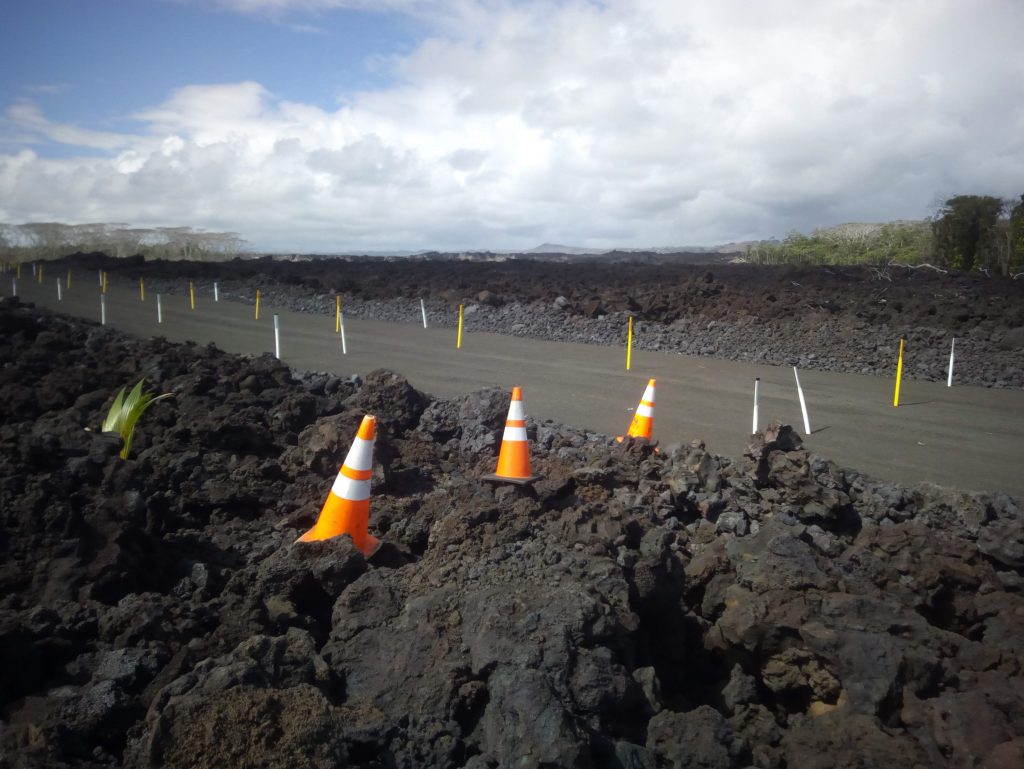
Pele, the goddess of fire and lava, is fast but the Hawaiian construction workers are right behind her.
THE COCONUT TRAIL
Pohoiki (Isaac Hale Beach Park) was cut off by lava in three events between May and June 2018. Shortly after the end of the outbreak, locals created a trail across the new lava flows. They would move rocks, fill in dips with gravel, and mark the trail with freshly sprouted coconuts. The trail was called the Coconut Trail.
ISAAC HALE BEACH PARK (POHOIKI)
Like many beach parks on the Big Island, Isaac Hale did not really have a sandy beach. It was rocks, woodland and famously a concrete boat ramp from which boats toured the lava entry into the ocean West of Kalapana. This lava flow started with the outbreak in 2014 and ended 2018 with a sudden lava level drop in the Pu’u O’o fissure. This marked the beginning of the 2018 outbreak in and around Leilani Estates.
Pohoiki used to be a popular destination for residents and tourists alike. You would always see people swimming in the thermally heated water at the boat ramp. A little bit further along the shore you would find the so called Queen’s Bath (one of several on the Big Island), a small thermally heated fresh water pond, which was picturesquely located underneath trees in the woods.
PELE VOLCANO GODDESS
Pele is the goddess of lava and volcanoes – or she is the volcano. Lava moves in such a strange ways that it sometimes feels alive. According to legend Pele was killed, but her spirit resided in Halema’uma’u Crater on the Kilauea Volcano. Many people will tell you they saw her as a young beautiful woman, an old woman or simply felt her presence.
THE ERUPTION
The outbreak in 2018 was the biggest in 200 years. The flow that was produced by Fissure 8 just stopped short from taking Pohoiki, not without chewing up parts of the parking lot. The lava flow also produced massive amounts of black by lava exploding into tiny little fragments upon contact with the cooler ocean water. These formed a large sand dune at Pohoiki and covered parts of the old coast line. The boat ramp became landlocked and the Queen’s Bath shallow and dead.
THE NEW ROAD
It didn’t take long for the construction workers to cut a new road into the lava flow that still emitted some heat. Just three month after the lava stopped just short of Pohoiki a new road was opened on 6 December 2018. Again, it became a popular destination for locals and tourists. When driving on the dirt road you can still spot some of the sprouted coconuts of the trail.

